胡抗美,生于壬辰之岁,湖北襄阳人,号鹿门山人,又号一席堂、得天庐、三觉翁。
胡抗美先生,修养深厚,学者书法家也。勤思好学,笔耕不辍。其书艺生涯,撰百万言之论,深探古代书论之美学,及书法情感与形式之命题。创作以狂草为归趣,成时代之风。胡氏谓书法形式,乃笔墨与空白之造型及其组合也。其定义二:一为笔墨空白之造型,一为诸造型之组合关系。
Hu Kangmei, born in the year of Renchen, is a native of Xiangyang, Hubei. He is also known by the names Lumen Shanren, Yixitang, Detianlu, and Sanjue Weng.
Mr. Hu Kangmei, a scholar-calligrapher of profound cultivation, is diligent in thought and tireless in writing. Throughout his career, he has composed millions of words in theoretical discourse, deeply exploring the aesthetic foundations of ancient calligraphy theory and the themes of calligraphic emotion and form. In his creations, he takes wild cursive as his aesthetic pursuit, forming the style of the era. Hu states that the form of calligraphy consists of the shaping and composition of both ink and blank space. This definition comprises two parts: one being the shaping of ink and blank space, and the other being the relationships among various forms.

胡抗美谓,书法造型,非独笔墨点画与结体,亦兼空白。笔墨空白,书法大构,各自独立,具独特造型与审美内涵。小至点画、结体,大至字组、行、区域,皆笔墨所显,墨色之妙,不可忽视;空白之重,亦然。
Hu Kangmei asserts that the shaping of calligraphy is not solely about the ink strokes and structures but also includes the blank spaces. Ink and blank spaces are the fundamental constructs of calligraphy, each independently possessing unique forms and aesthetic connotations. From the smallest strokes and structures to the larger character groups, lines, and areas, all are manifested through ink. The subtlety of ink color is crucial and should not be overlooked; the importance of blank spaces is equally significant
胡氏之理论,书法组合,以对比为要。用笔轻重快慢、点画粗细长短、结体大小正侧、章法疏密虚实、墨色枯湿浓淡,皆为对比。组合之理,在“和而不同”,必先对比大小、正侧、粗细、方圆、疏密、虚实,继而和谐。蔡邕云:“夫书肇于自然,自然既立,阴阳生矣。”阴阳对比,使书法内涵愈丰,视觉愈强。对比之丰富,反差之强烈,虽增视觉之效,亦增和谐之难。
In Hu’s theory, the composition of calligraphy relies on contrast. The contrast includes the weight and speed of the brush, the thickness and length of strokes, the size and direction of structures, the density and void of layout, and the dryness and wetness of ink. The principle of composition is “harmony within difference,” meaning contrast in size, direction, thickness, roundness, density, and void precedes achieving harmony. Cai Yong once said: "Calligraphy arises from nature; once nature is established, yin and yang are born." This contrast of yin and yang enriches the inner content of calligraphy and strengthens its visual impact. The richness of contrast and the intensity of difference, while enhancing visual effect, also increase the difficulty of achieving harmony.
胡抗美为理此,归之“形”与“势”二大。粗细方圆、大小正侧、枯湿浓淡为“形”;提按顿挫、轻重快慢、离合断续为“势”。蔡邕有云:“阴阳既生,形势出焉。”此系统之思,既高书理,亦明书法之导。胡抗美于创作,以狂草为审美所归,重笔墨与空白之动静相和。其作既具强烈视觉冲击,亦蕴深刻艺理与情怀。妙于笔墨空白之处理,推传统书艺至新高,成独特风貌。
To address this, Hu Kangmei systematizes these relationships into two major categories: "shape" and "force." Shape includes thickness, roundness, size, direction, and ink dryness; force includes pressing, lifting, pausing, speed, connection, and interruption. Cai Yong further stated: "With the birth of yin and yang, shape and force emerge." This systematic thinking elevates the theoretical height of calligraphy creation and provides clear guidance for practice. In his creation, Hu Kangmei takes wild cursive as his aesthetic destination, emphasizing the dynamic balance and harmonious contrast between ink and blank space. His works exhibit strong visual impact and deep artistic meaning and emotional expression. Through skillful handling of ink and blank space, he elevates traditional calligraphy to new heights, forming a unique personal style.

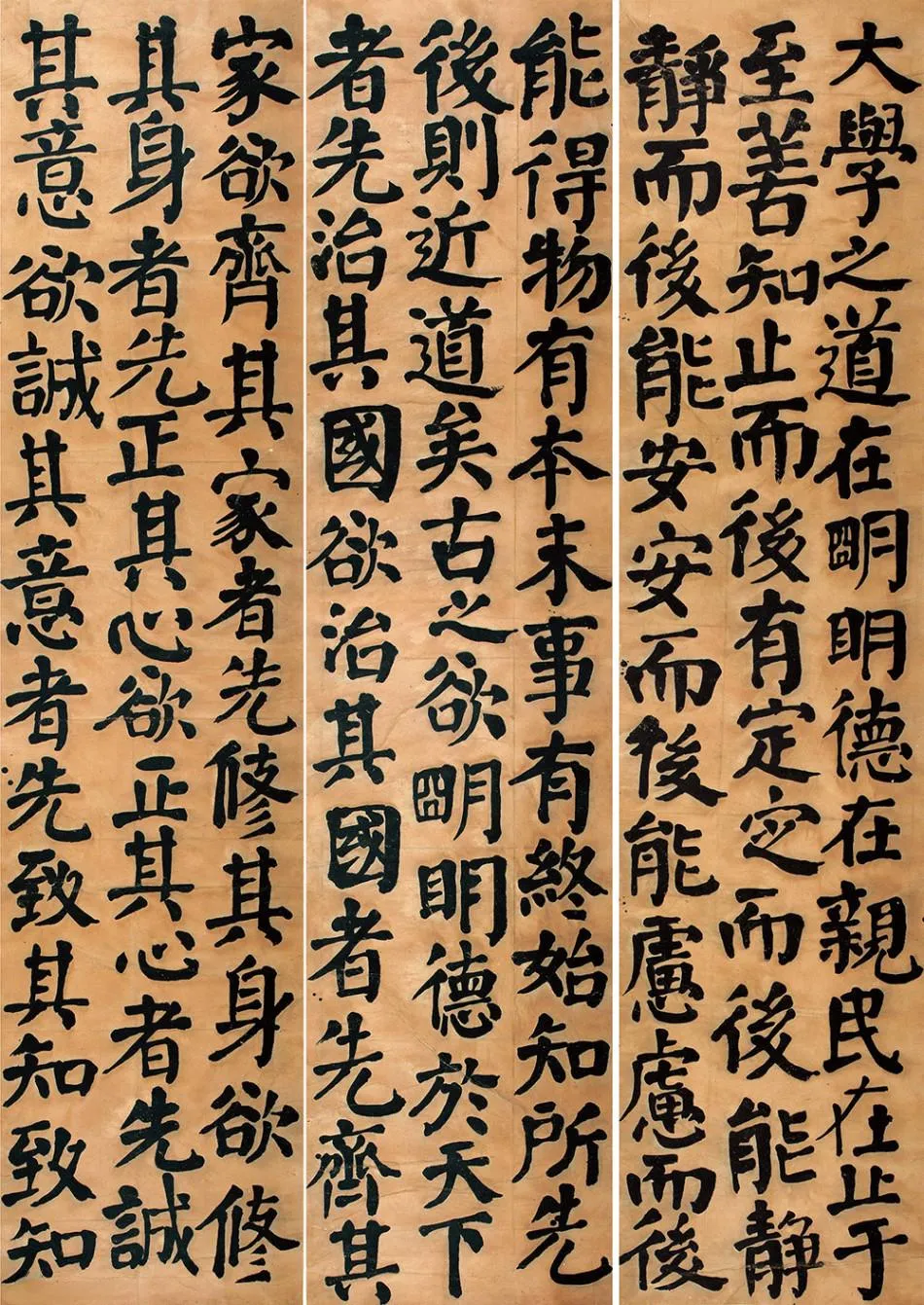
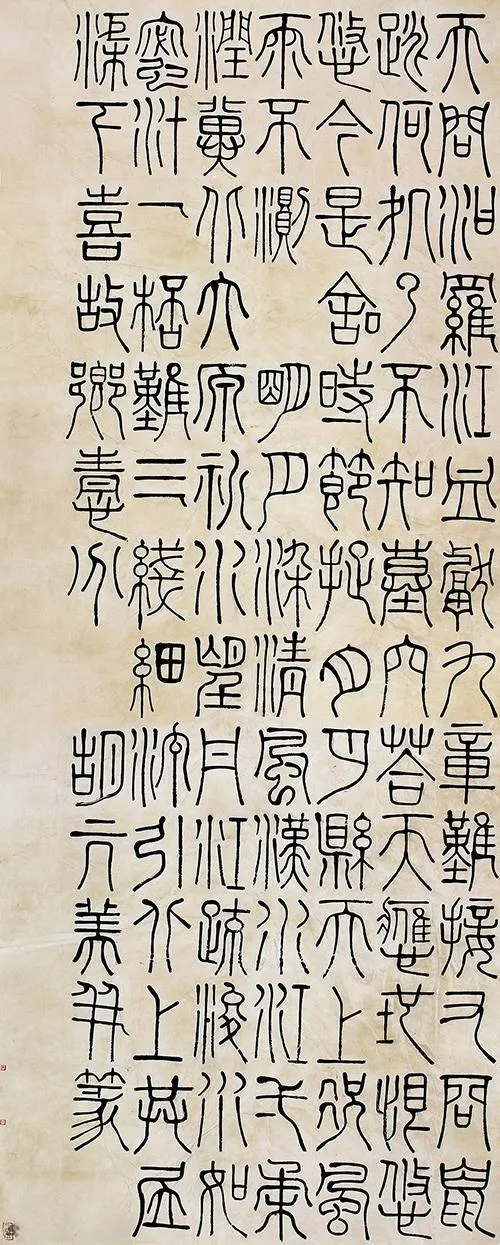
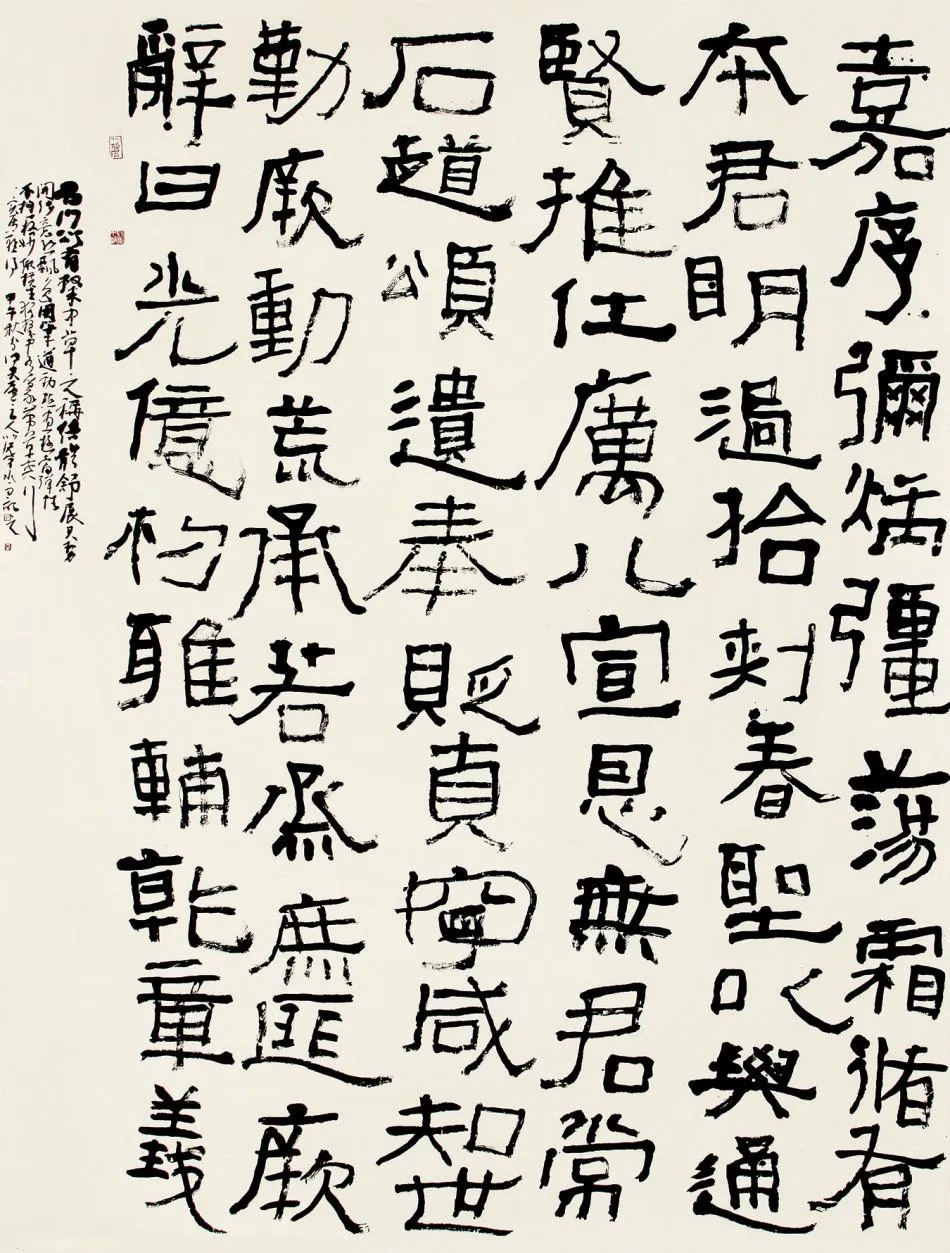
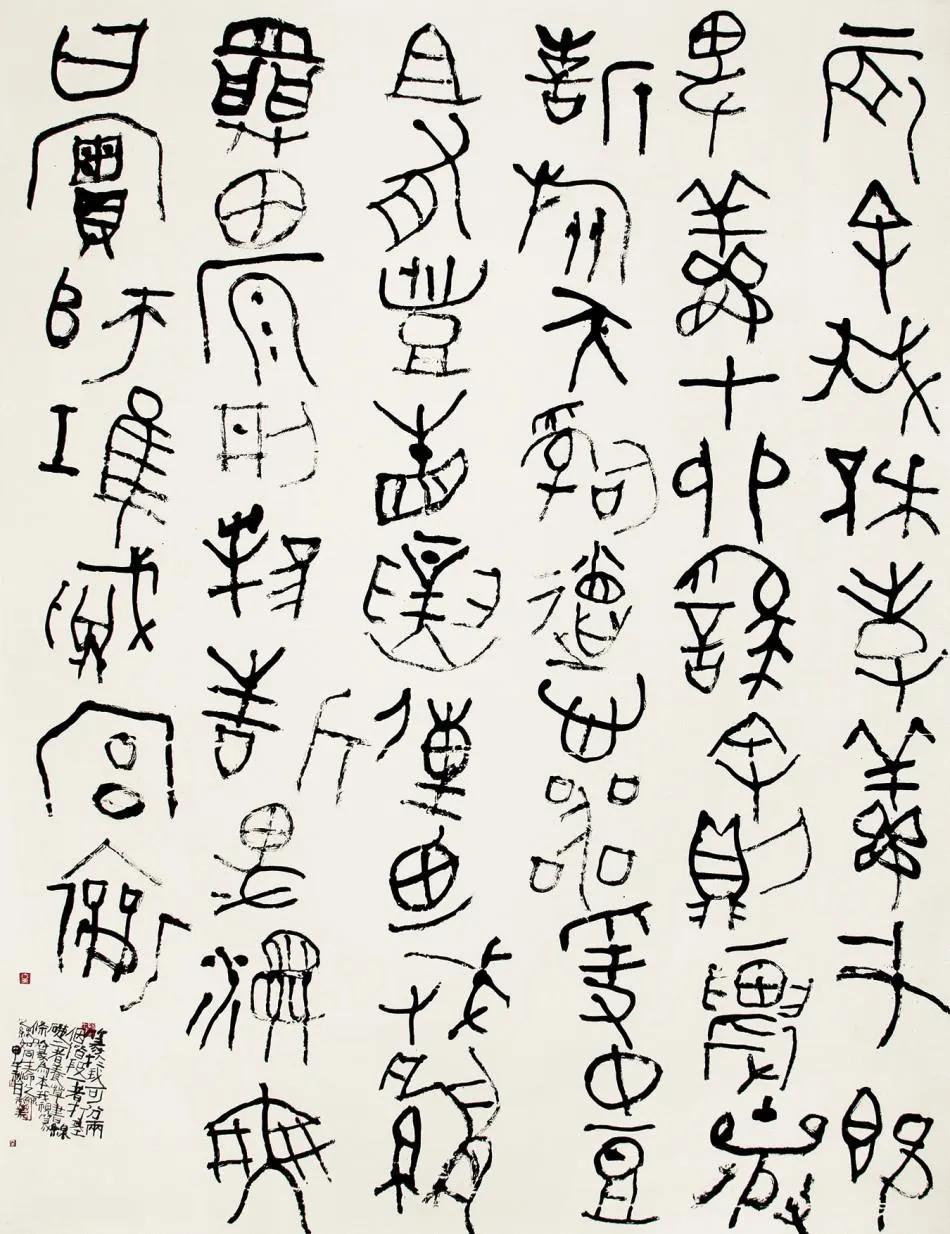
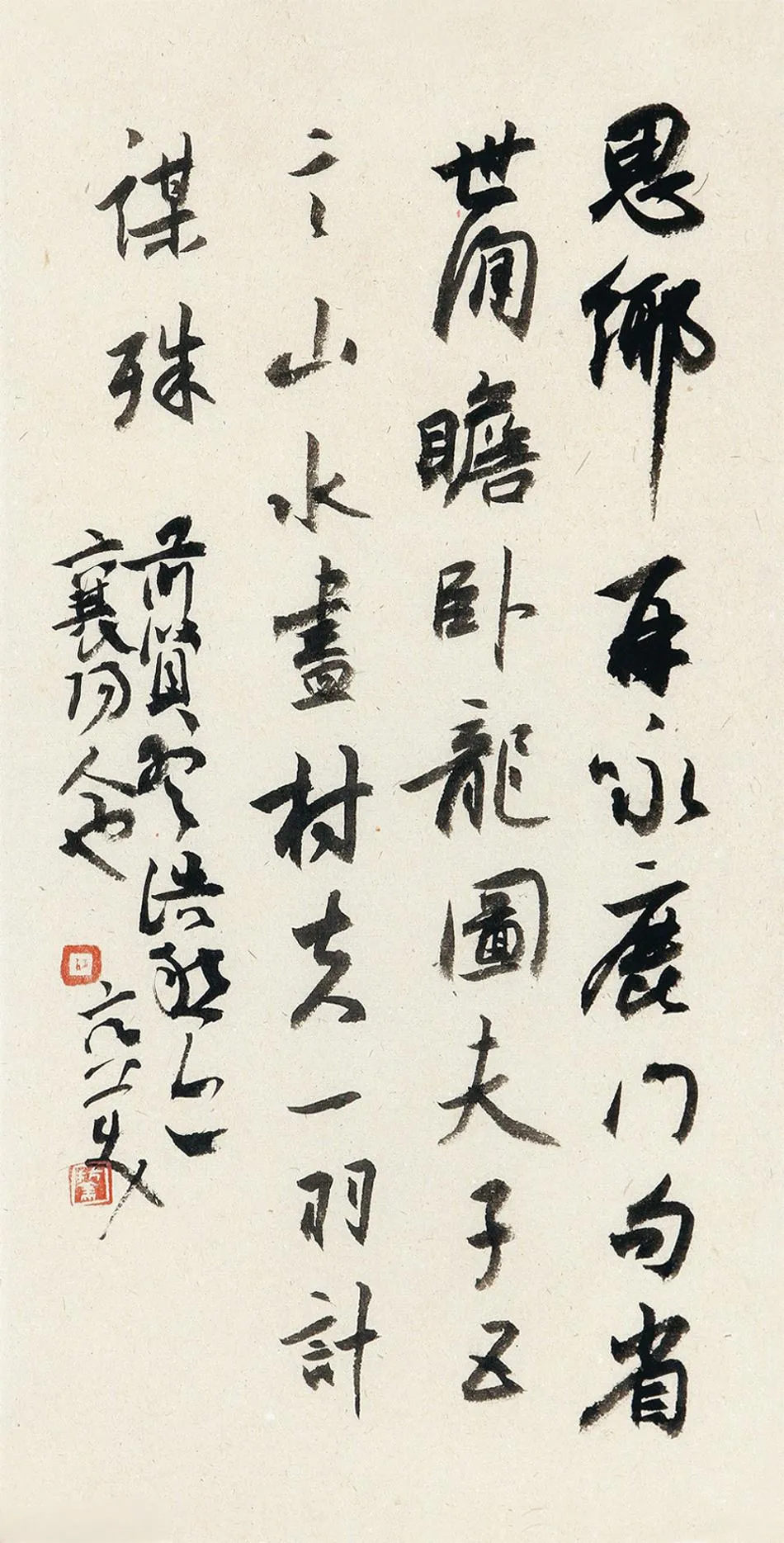
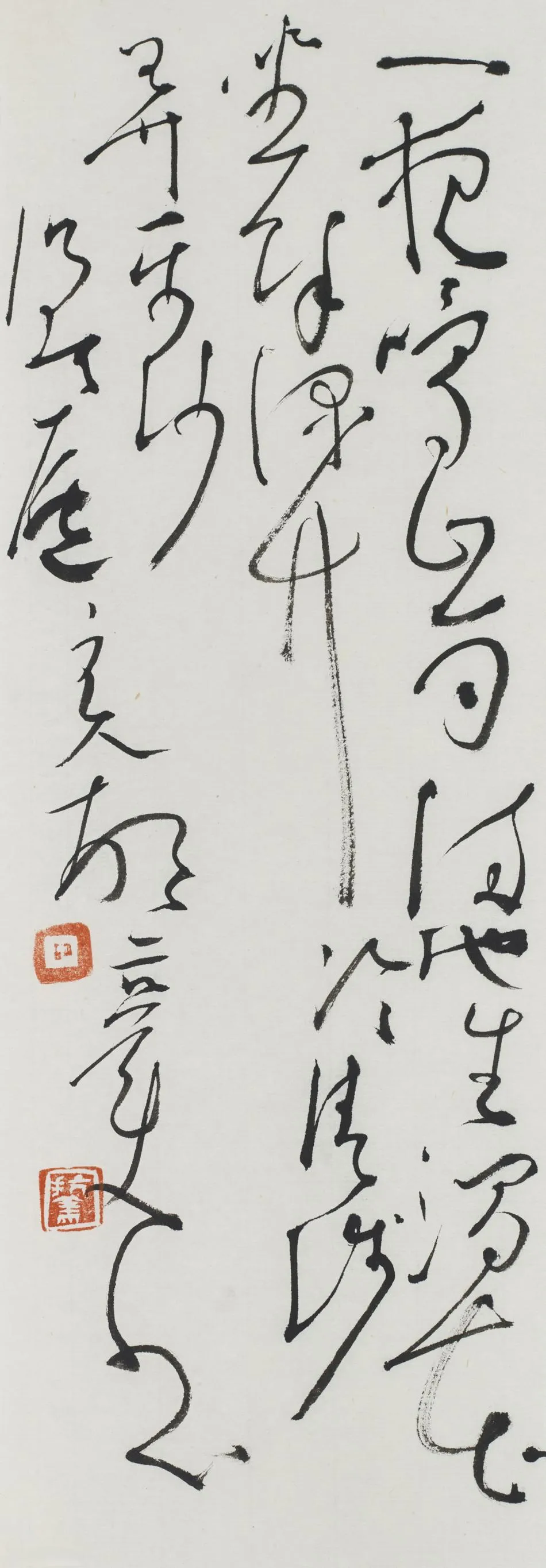

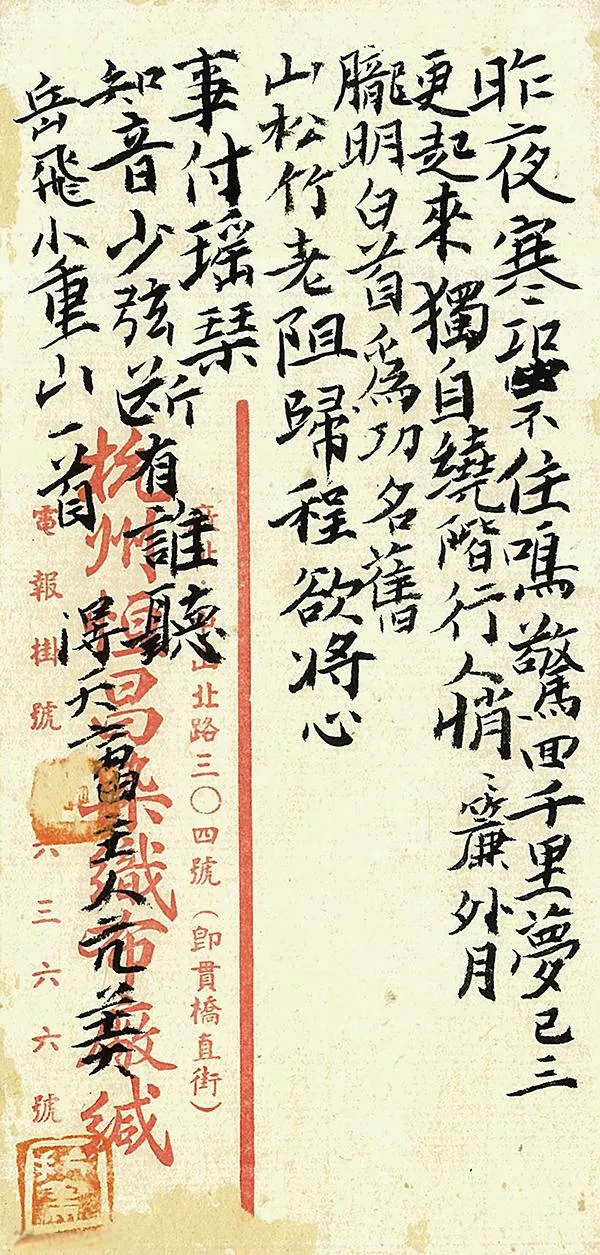
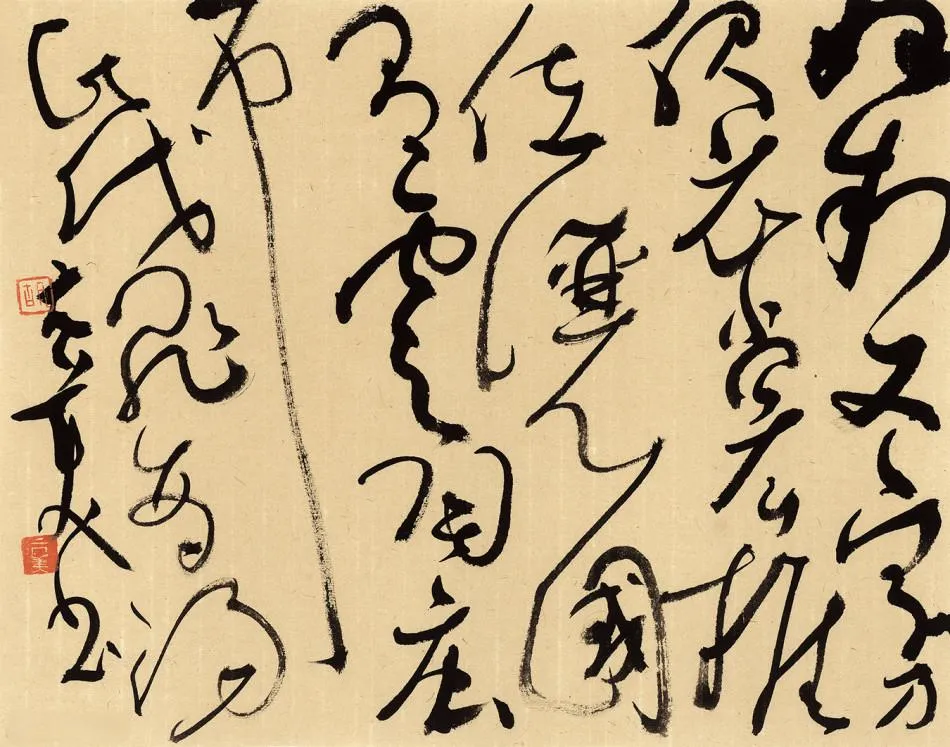

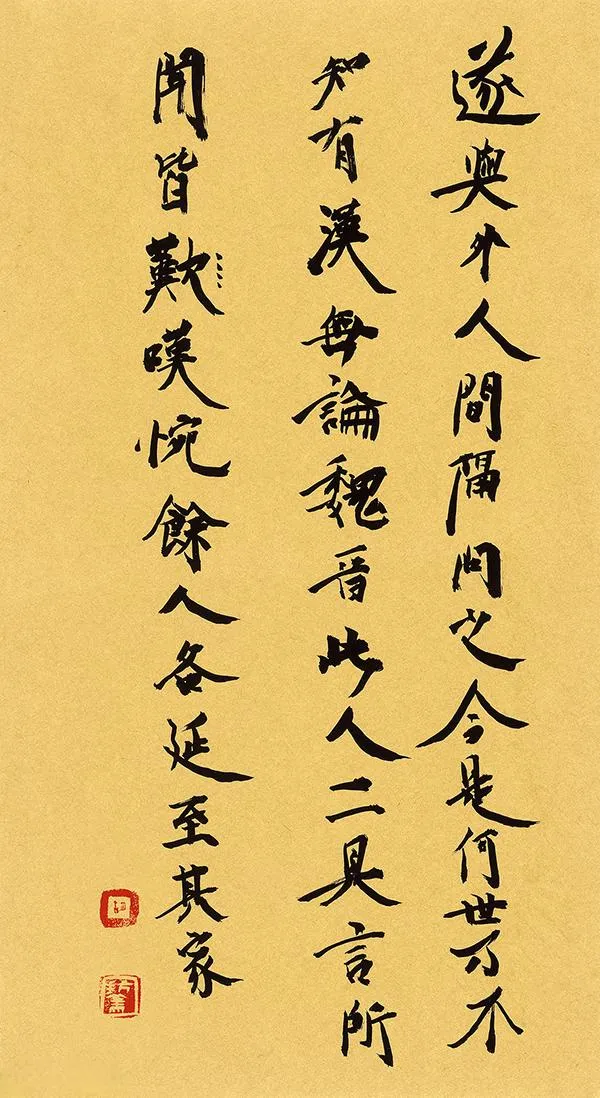
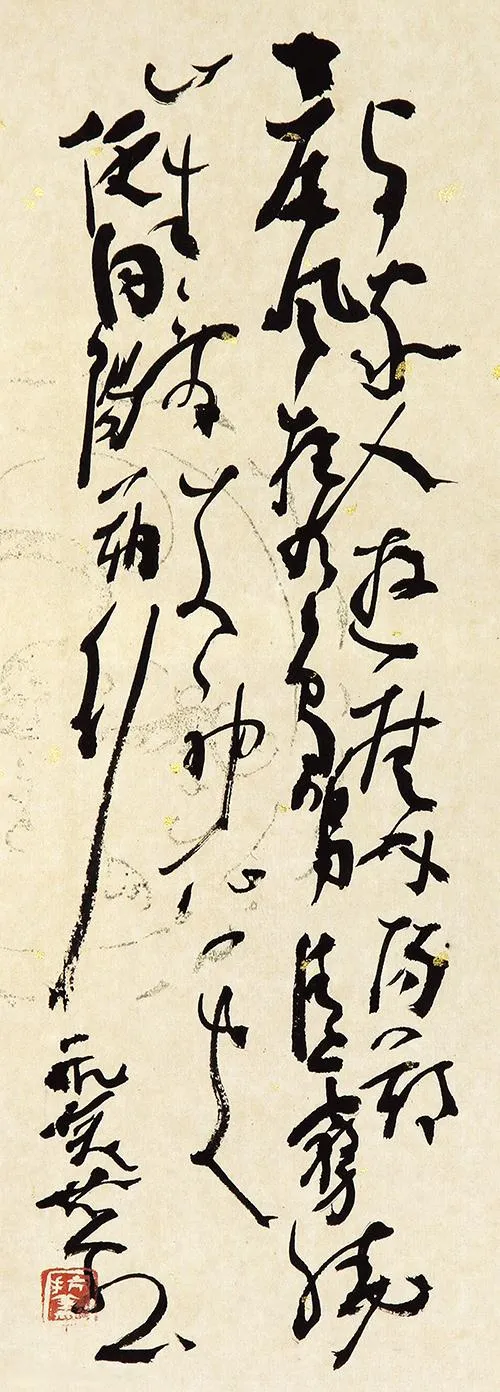
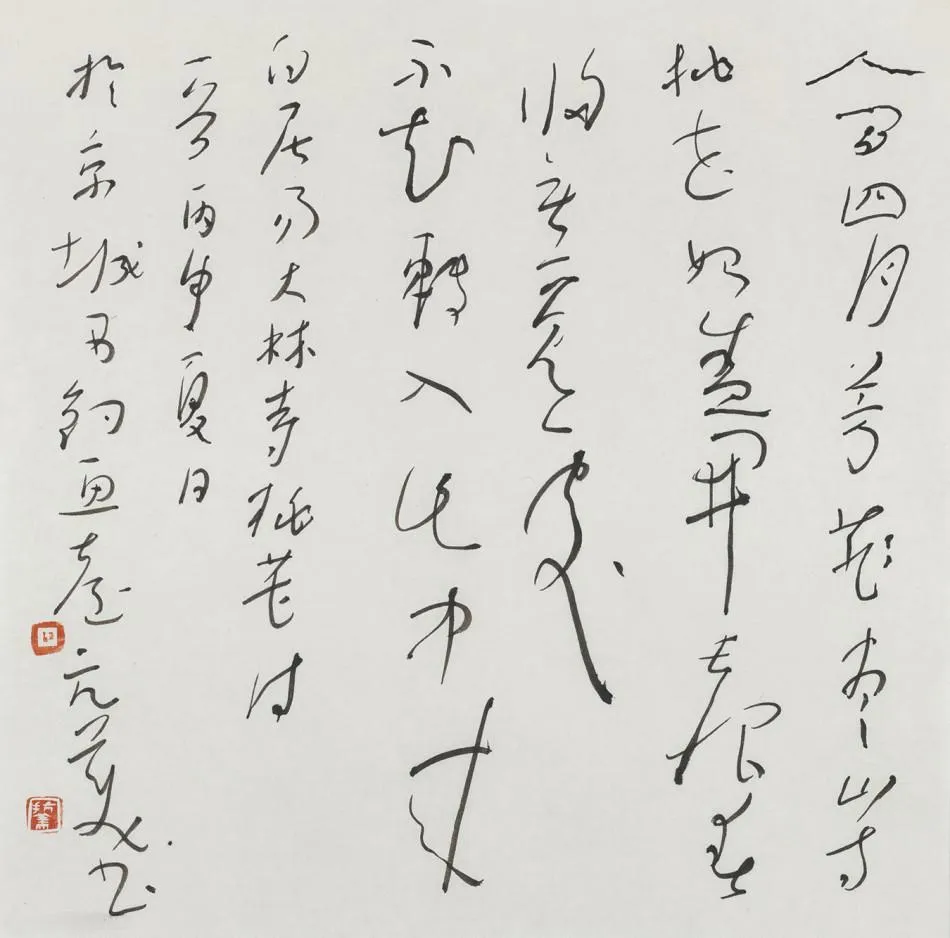
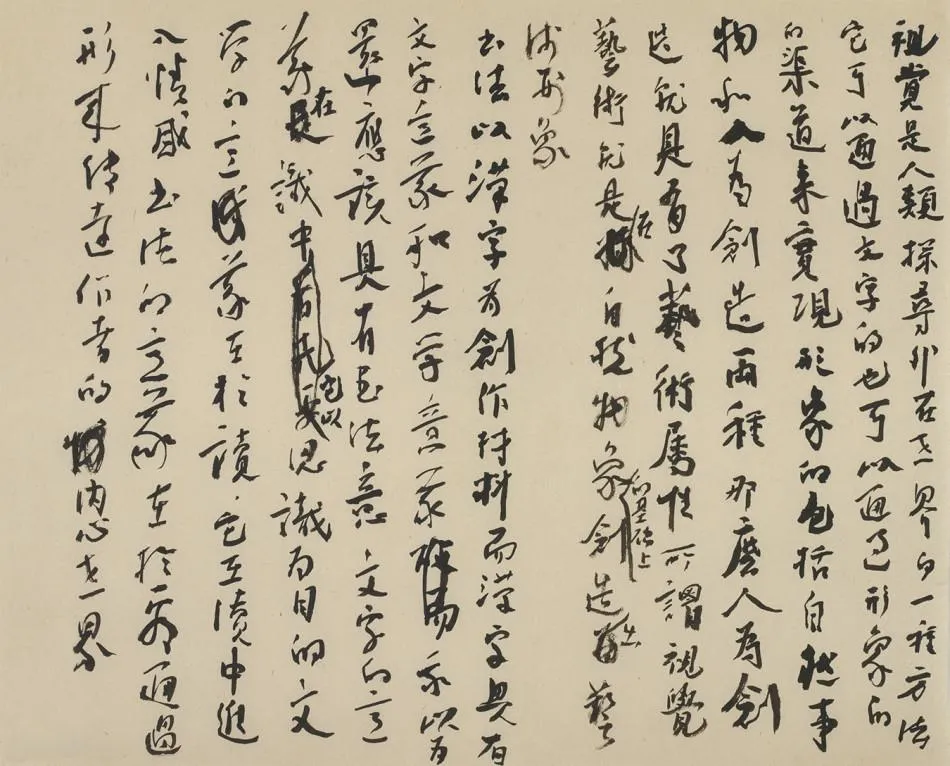

胡抗美先生于书法之探求,恒以书法本体之探索为至高目标。藉其书法之实践与教学,致力于解答书法本体之具体问题。书法为艺,其艺术性何在,世人多不明了。胡抗美眼中,古书常言“锥画沙、屋漏痕”,此非仅前贤创作经验之积,更为形象之比喻。胡氏谓此二句,乃力之表现,含动感,展强烈视觉冲击与笔墨张力。章法言“疏可跑马、密不透风”,乃中土独特空间意识之体现。
In his pursuit of calligraphy, Hu Kangmei consistently regards the exploration of the essence of calligraphy as his utmost goal. Through his practice and teaching, he strives to solve specific questions about the essence of calligraphy. As an art form, many do not understand what constitutes the artistic nature of calligraphy. In Hu's view, the ancient phrases “lines like an awl carving into sand, strokes like the trace of a roof leak” are not merely the accumulated experience of predecessors but vivid metaphors. Hu believes these phrases express the power of strokes, containing movement and showcasing strong visual impact and ink tension. The phrase “sparse enough to run a horse, dense enough to not let the wind through” in layout reflects the unique spatial awareness of the Chinese.
于疏密关系之处理,须胸怀广阔,以美学之空间感呈之。华夏艺术之空间感,伟而智,王维有言:“江流天地外,山色有无中”,此空间感,惊叹不已而不飘渺。胡抗美谓,中国哲思,以天地万物归“阴阳”二字,此空间感乃书艺之基。沈鹏亦云,书法虚实,虚尤重于实。
Handling the relationship between sparsity and density requires a broad mind, presenting works with an aesthetic sense of space. The spatial awareness in Chinese art is undoubtedly grand and wise. As Wang Wei said, “The river flows beyond the heavens, the mountain colors exist and do not,” this sense of space is astonishing yet not ethereal. Hu Kangmei believes Chinese philosophy summarizes all things under heaven into “yin and yang,” and this spatial awareness is the foundation of calligraphy art. Shen Peng also pointed out that in the void-solid relationship in calligraphy, void is more important than solid.
胡抗美探索,乃传统理性之返。胡氏信,探索当于传统中寻解,觅发展之境,与时俱契。其立足于此,既显时代之象,亦彰书法之异。胡抗美坚执,无传统,无书法之高境。
胡抗美之书艺,既探形式,尤求内蕴。其作承传统精髓,融现代审美,成独特之风。其书艺,既尊传统,亦应时代。
Hu Kangmei’s exploration is a rational return to tradition. He believes that exploration must seek answers within tradition, finding development space and characteristics that align with the times. His foundation is here, reflecting the features of the era and the uniqueness of calligraphy. Hu firmly believes that without tradition, there is no height in calligraphy.
In Hu Kangmei’s world of calligraphy, he not only explores artistic form but also pursues deep artistic connotation. His works inherit the essence of traditional calligraphy, blend modern aesthetic consciousness, and form a unique artistic expression. His calligraphy art respects and inherits tradition while also responding to and innovating with the times.
责任编辑:苗君